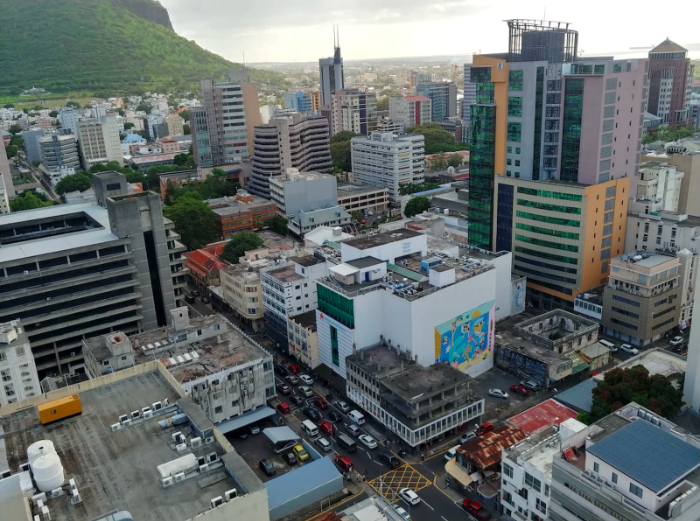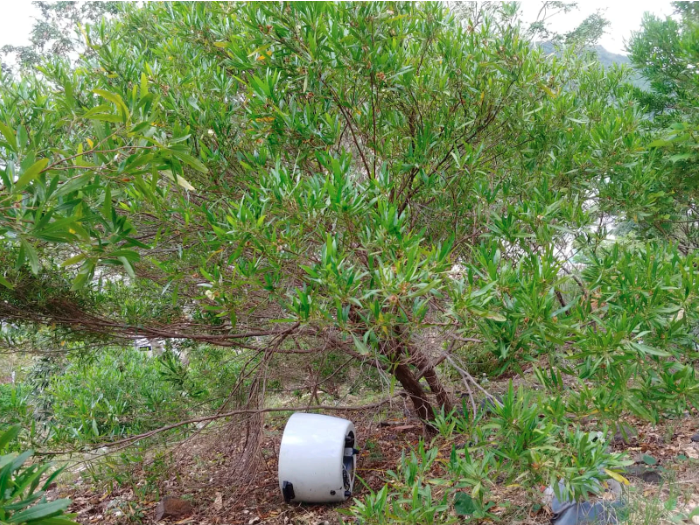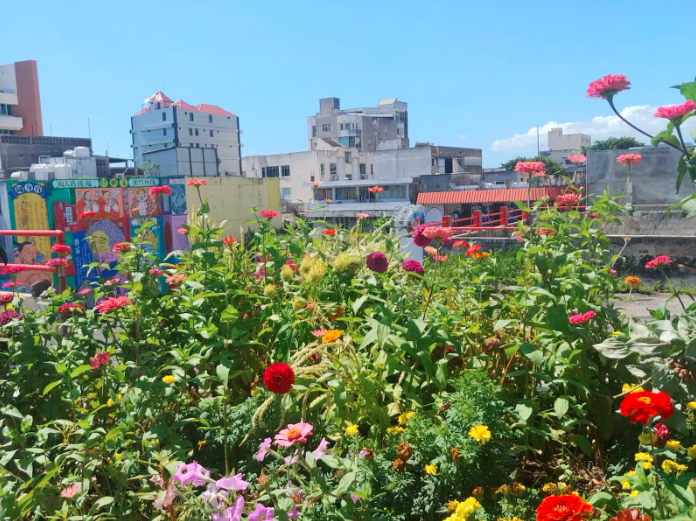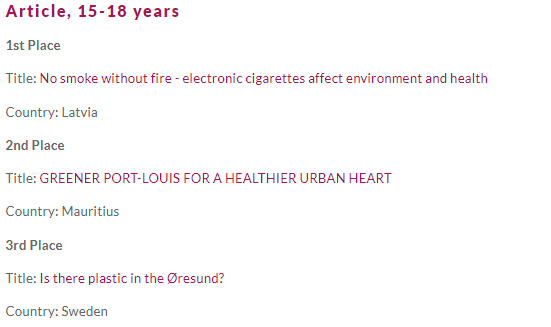YRE Competition 2022
2nd Place - Article
15-18 years old
By Chan Kam Lan Serenza, Dostmohamed Farhana, Gourdin Laeticia, Mannaram Isha, Andriamalala Nissiah, Christine Annaëlle, Latour Maëva, and Sarifan Zakkiyah
Our planet is the only place in the universe where life has evolved. Instead of using natural resources judiciously, humans have depleted them to meet their immediate needs, without thinking about the future. We have to face the fact that not all the inhabitants of our planet can have the same lifestyle as the industrialised countries. It is high time to bring changes and learn to live differently for the sustainability of our Earth. It is not a question of renouncing progress but of reconciling economic and social progress with due respect for nature.
Everything is speeding up in the capital of Port-Louis, which has witnessed many demographic, social and economic changes. According to a comparison of data from Statistics Mauritius, our country has moved from 1,186,873 inhabitants in the year 2000 to 1,265,740 in 2020. Thanks to the economic development since the 1980s to the present, our standard of living has increased. Under the influence of modernity, Mauritians have moved from traditional houses to concrete habitats. New roads have been built, and buildings have replaced green areas over the years. The density of the population in the capital, human activities and transport have consequently generated a rise in temperature.
The centre of Port-Louis is not immune to global warming.
Vegetation is very important in the heart of our capital city, which is threatened by air pollution and global warming. By increasing green spaces such as roadside verges, gardens and trees, we will not only increase recreational spaces but also improve the living conditions and the environment of Port Louis. Following the Millennium Ecosystem Assessment report, it was recognised that the well-being of our societies is directly dependent on nature when it is left to function in a free and uninterrupted mode. Besides, green spaces regulate certain environmental problems. For example, the leaves of trees bind dust and particles from diesel combustion. Trees also store carbon, cultivated or bare surfaces allow rainwater to infiltrate, and the presence of insects helps with pollination, and to get fruits and seeds.
In addition, a line of trees can lower the temperature of a street by three degrees, and in the context of climate change, this role becomes even more crucial. By increasing the number of spots for plants and animals, a minimum of biodiversity can be established. Plants attract insects, which in turn provide food for birds that sow seeds and help other plants to grow. In this way, the food chains necessary for the functioning of ecosystems are reconstructed.
In Port Louis, a private company is working with an NGO - Friends of the Environment - which has embarked on a reforestation project on the slopes of La Citadelle, a hill in the heart of the capital. In order to restore the original endemic and indigenous flora of the mountain, a study was first conducted to trace the plant species that were there, explains Jayaneesh Namah, coordinator of the Citadelle Native Re-vegetation Project. The organisation has already reintroduced 14 plant species on the northern flank namely, Bois Clou, Palmiste Bouteille, Bois Reinette, Bois Judas, Bois Bœuf, Bois Cabri, Latanier Bleu, Barleria, Bois Chandelle, Vétiver Indigène, Aloe Endémique, Bois Mapou and Pandanus, taking into account their ability to withstand the arid climate of Port Louis. From 2016 to 2020, FOE was able to plant approximately 5,890 trees and more than 1700 eco-citizens participated in the project. This green space in the capital has become a real biodiversity relay that stabilises the functioning of ecosystems.
Dumping of electric appliances (here a retired rice cooker) cause severe damage and disequilibrium to nature and plants.
To maintain biodiversity in the heart of the city, it is important to create a more or less continuous green chain. Private, public or company gardens could be the links in this ecological chain. Port-Louis should impose environmental measures and injunctions in urban planning projects. More green spaces on the roofs of buildings, plant walls and gardens instead of concrete courtyards should be considered.
Plants and flower garden on top of a building in the heart of the capital to reduce the temperature stored on the roof.
According to research, the temperature at the top of a building can reach 50°C in the middle of summer, but with the gardens, it drops to 30°C, thus limiting the use of air conditioning on the top floors.
By planting in our garden, we could revive forgotten local fruits - Carambola, Corossol, Jamalac among others. By choosing more hardy species that are better adapted to their environment, we would use less pesticides. Natural fertilisers, such as composting household waste to improve soil fertility in the long term, are an option. We could also equip ourselves with a rainwater harvesting system for watering. In this way, we would consume more ecologically because it would lead to less transport, packaging and therefore less waste and pollution. The transport of imported fruits and vegetables requires energy expenditure which increases pollution and contributes to climate change.
In Port-Louis, natural areas are continually giving way to artificial land. Our capital is not immune to various forms of pollution, global warming and loss of biodiversity. By 2030, we (city officials, citizens and elected representatives) need to recreate Port Louis. It is not only knowledge or laws that will help us preserve the environment, but also education. Practising the solutions proposed above could help us to achieve several goals (including SDGs 3, 11, 12, 13 and 15). However, the solutions are never simple to implement because of the consequences on our lifestyles. We must therefore remember that "We do not inherit the Earth from our parents, we borrow it from our children." - (Antoine de Saint-Exupéry).
DISSEMINATION
Local Media
(newspaper) - https://www.lexpress.mu/article/408821/young-reporters-environment-collegiens-qui-sensibilisent-biodiversite
Personal Sphere
https://m.facebook.com/story.php?story_fbid=1427620484348246&id=100013009242108
https://m.facebook.com/story.php?story_fbid=167290935736771&id=100073675964225
https://m.facebook.com/story.php?story_fbid=2832389787065094&id=100008823000514
https://www.instagram.com/p/CdV9i0qsNanTzRR9GZbhV1TakUxY54pUwu3k_U0/?igshid=YmMyMTA2M2Y=
https://www.instagram.com/p/CdWAEa6sjOr/?igshid=YmMyMTA2M2Y=
School Community
https://m.facebook.com/story.php?story_fbid=114361391272998&id=100080974135135
Notice Board of School
National Operator Organisation
https://www.facebook.com/329507120474742/posts/pfbid0YAvPvsUSrjTjSiPq1kZSM2vHfbSdmTpycugaCNqS26Rz7yyn4uTwJtEWqCQkocByl/




